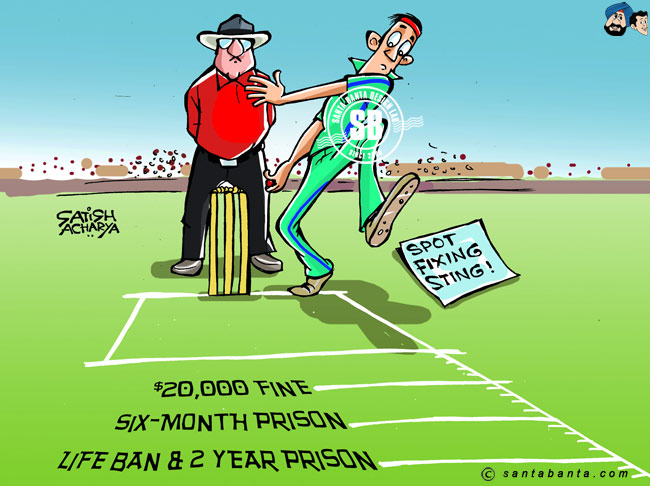New Delhi: India fast bowler Sreesanth and two other Rajasthan Royals players – Ankit Chavan and Ajit Chandila – were on Tuesday arrested by the Delhi Police on charges of spot-fixing.
Spot-fixing is different from match-fixing in that it relates to isolated incidents as opposed to the entire result of the match. For example, a no-ball, wide, type of delivery or mode of dismissal. This does not require several or all 11 players to be in on the fix; rather, just one member of the team can facilitate it. This makes it harder to detect as well as more cost-effective for the fixers.
In spot-fixing, for example, a batsman can ensure he gets out for single figures or a bowler can deliver a wide or no-ball at a particular time. This makes it the most difficult to detect because betting syndicates place bets on these particular moments. In such, Twenty20 cricket format is predominantly vulnerable due to the frenetic nature of the format which allows for minor individual performances to be dismissed as insignificant.
It is widely believed that the introduction and subsequent surge of Twenty20 cricket has seen a major rise in spot-fixing and internet gambling. Bookies can arrange for players to fix certain elements of their individual performances and once the information is passed on, gamblers can place bets on certain deliveries and make fortunes.
The term spot-fixing came to prominence in August 2010 after the now defunct News of the World named two Pakistan fast bowlers as having agreed to deliver no-balls to order during a Test match at Lord’s. In November 2011, Pakistan players Salman Butt, Mohammad Asif and Mohammad Amir were found guilty in an English criminal trial of arranging to bowl no-balls for betting scams during the Test at Lord’s. Butt was banned for 10 years, with five suspended, Asif for seven years with two suspended and the then teenager Amir for five years. The trio was also jailed by a British court but released in 2012 after completing half of their sentences.
Not long after the Lord’s Test revelations, former Pakistan legspinner and fellow Essex team-mate Mervyn Westfield were named in a spot-fixing ring. Kaneria was subsequently banned for life by the England and Wales Cricket Board (ECB) over his involvement in spot-fixing and Westfield handed a five-year ban.
In 2012, during the fifth season of the IPL, five uncapped domestic players were handed bans following a sting operation by a Hindi news channel – Shalabh Srivastava, Amit Yadav, Mohnish Mishra, TP Sudhindra and Abhinav Bali became the third Indian player to be banned for life, after Mohammad Azharuddin (found guilty of match-fixing) and Ajay Sharma (found guilty of having links with bookies).
The biggest hub of betting on cricket is the Indian subcontinent. In 2012, English journalist and betting expert Ed Hawkins’ Bookie Gambler Fixer Spy: A Journey to the Heart of Cricket’s Underworld ruffled feathers the moment extracts of his book were published. The book, an investigative foray into the world of betting and fixing, particularly in India, drew attention after Hawkins brought the 2011 World Cup semi-final between India and Pakistan under a cloud.

